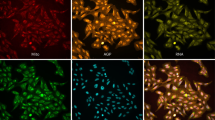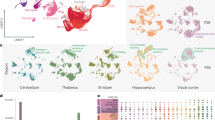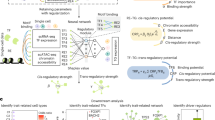Abstract
The fundamental aim of genetics is to understand how an organism's phenotype is determined by its genotype, and implicit in this is predicting how changes in DNA sequence alter phenotypes. A single network covering all the genes of an organism might guide such predictions down to the level of individual cells and tissues. To validate this approach, we computationally generated a network covering most C. elegans genes and tested its predictive capacity. Connectivity within this network predicts essentiality, identifying this relationship as an evolutionarily conserved biological principle. Critically, the network makes tissue-specific predictions—we accurately identify genes for most systematically assayed loss-of-function phenotypes, which span diverse cellular and developmental processes. Using the network, we identify 16 genes whose inactivation suppresses defects in the retinoblastoma tumor suppressor pathway, and we successfully predict that the dystrophin complex modulates EGF signaling. We conclude that an analogous network for human genes might be similarly predictive and thus facilitate identification of disease genes and rational therapeutic targets.
This is a preview of subscription content, access via your institution
Access options
Subscribe to this journal
Receive 12 print issues and online access
$209.00 per year
only $17.42 per issue
Buy this article
- Purchase on Springer Link
- Instant access to full article PDF
Prices may be subject to local taxes which are calculated during checkout





Similar content being viewed by others
References
Bowers, P.M. et al. Prolinks: a database of protein functional linkages derived from coevolution. Genome Biol. 5, R35 (2004).
Lee, I., Date, S.V., Adai, A.T. & Marcotte, E.M. A probabilistic functional network of yeast genes. Science 306, 1555–1558 (2004).
Troyanskaya, O.G., Dolinski, K., Owen, A.B., Altman, R.B. & Botstein, D. A Bayesian framework for combining heterogeneous data sources for gene function prediction (in Saccharomyces cerevisiae). Proc. Natl. Acad. Sci. USA 100, 8348–8353 (2003).
von Mering, C. et al. STRING: a database of predicted functional associations between proteins. Nucleic Acids Res. 31, 258–261 (2003).
Rhodes, D.R. et al. Probabilistic model of the human protein-protein interaction network. Nat. Biotechnol. 23, 951–959 (2005).
Chen, Y. & Xu, D. Global protein function annotation through mining genome-scale data in yeast Saccharomyces cerevisiae. Nucleic Acids Res. 32, 6414–6424 (2004).
Jeong, H., Mason, S.P., Barabasi, A.L. & Oltvai, Z.N. Lethality and centrality in protein networks. Nature 411, 41–42 (2001).
Famili, I., Forster, J., Nielsen, J. & Palsson, B.O. Saccharomyces cerevisiae phenotypes can be predicted by using constraint-based analysis of a genome-scale reconstructed metabolic network. Proc. Natl. Acad. Sci. USA 100, 13134–13139 (2003).
Gunsalus, K.C. et al. Predictive models of molecular machines involved in Caenorhabditis elegans early embryogenesis. Nature 436, 861–865 (2005).
Li, S. et al. A map of the interactome network of the metazoan C. elegans. Science 303, 540–543 (2004).
Stuart, J.M., Segal, E., Koller, D. & Kim, S.K. A gene-coexpression network for global discovery of conserved genetic modules. Science 302, 249–255 (2003).
Zhong, W. & Sternberg, P.W. Genome-wide prediction of C. elegans genetic interactions. Science 311, 1481–1484 (2006).
Chen, N. et al. WormBase: a comprehensive data resource for Caenorhabditis biology and genomics. Nucleic Acids Res. 33, D383–D389 (2005).
Giot, L. et al. A protein interaction map of Drosophila melanogaster. Science 302, 1727–1736 (2003).
Lee, I., Li, Z. & Marcotte, E.M. An improved, bias-reduced probabilistic functional gene network of baker's yeast, Saccharomyces cerevisiae. PLoS ONE 2, e988 (2007).
Remm, M., Storm, C.E. & Sonnhammer, E.L. Automatic clustering of orthologs and in-paralogs from pairwise species comparisons. J. Mol. Biol. 314, 1041–1052 (2001).
Gandhi, T.K. et al. Analysis of the human protein interactome and comparison with yeast, worm and fly interaction datasets. Nat. Genet. 38, 285–293 (2006).
Deplancke, B. et al. A gene-centered C. elegans protein-DNA interaction network. Cell 125, 1193–1205 (2006).
Kamath, R.S. et al. Systematic functional analysis of the Caenorhabditis elegans genome using RNAi. Nature 421, 231–237 (2003).
Marcotte, E.M., Pellegrini, M., Thompson, M.J., Yeates, T.O. & Eisenberg, D. A combined algorithm for genome-wide prediction of protein function. Nature 402, 83–86 (1999).
Walker, M.G., Volkmuth, W. & Klingler, T.M. Pharmaceutical target discovery using Guilt-by-Association: schizophrenia and Parkinson's disease genes. Proc. Int. Conf. Intell. Syst. Mol. Biol. 1999, 282–286 (1999).
Hansen, M., Hsu, A.L., Dillin, A. & Kenyon, C. New genes tied to endocrine, metabolic, and dietary regulation of lifespan from a Caenorhabditis elegans genomic RNAi screen. PLoS Genet. 1, 119–128 (2005).
Hamilton, B. et al. A systematic RNAi screen for longevity genes in C. elegans. Genes Dev. 19, 1544–1555 (2005).
Curran, S.P. & Ruvkun, G. Lifespan regulation by evolutionarily conserved genes essential for viability. PLoS Genet. 3, e56 (2007).
Lu, X. & Horvitz, H.R. lin-35 and lin-53, two genes that antagonize a C. elegans Ras pathway, encode proteins similar to Rb and its binding protein RbAp48. Cell 95, 981–991 (1998).
Lehner, B. et al. Loss of LIN-35, the Caenorhabditis elegans ortholog of the tumor suppressor p105Rb, results in enhanced RNA interference. Genome Biol. 7, R4 (2006).
Wang, D. et al. Somatic misexpression of germline P granules and enhanced RNA interference in retinoblastoma pathway mutants. Nature 436, 593–597 (2005).
Cui, M., Kim, E.B. & Han, M. Diverse chromatin remodeling genes antagonize the Rb-involved SynMuv pathways in C. elegans. PLoS Genet. 2, e74 (2006).
Segalat, L. Dystrophin and functionally related proteins in the nematode Caenorhabditis elegans. Neuromuscul. Disord. 12 Suppl 1, S105–S109 (2002).
Sundaram, M.V. RTK/Ras/MAP kinase signaling. WormBook Vol. 1.80.1 <http://www.wormbook.org>(2005).
Yochem, J., Sundaram, M. & Han, M. Ras is required for a limited number of cell fates and not for general proliferation in Caenorhabditis elegans. Mol. Cell. Biol. 17, 2716–2722 (1997).
Chockalingam, P.S. et al. Dystrophin-glycoprotein complex and Ras and Rho GTPase signaling are altered in muscle atrophy. Am. J. Physiol. Cell Physiol. 283, C500–C511 (2002).
Altschul, S.F., Gish, W., Miller, W., Myers, E.W. & Lipman, D.J. Basic local alignment search tool. J. Mol. Biol. 215, 403–410 (1990).
Gollub, J. et al. The Stanford microarray database: data access and quality assessment tools. Nucleic Acids Res. 31, 94–96 (2003).
Jiang, M. et al. Genome-wide analysis of developmental and sex-regulated gene expression profiles in Caenorhabditis elegans. Proc. Natl. Acad. Sci. USA 98, 218–223 (2001).
Lund, J. et al. Transcriptional profile of aging in C. elegans. Curr. Biol. 12, 1566–1573 (2002).
Reinke, V. et al. A global profile of germline gene expression in C. elegans. Mol. Cell 6, 605–616 (2000).
Romagnolo, B. et al. Downstream targets of let-60 Ras in Caenorhabditis elegans. Dev. Biol. 247, 127–136 (2002).
Wang, J. & Kim, S.K. Global analysis of dauer gene expression in Caenorhabditis elegans. Development 130, 1621–1634 (2003).
Alfarano, C. et al. The biomolecular interaction network database and related tools 2005 update. Nucleic Acids Res. 33, D418–D424 (2005).
Joshi-Tope, G. et al. Reactome: a knowledgebase of biological pathways. Nucleic Acids Res. 33, D428–D432 (2005).
Peri, S. et al. Development of human protein reference database as an initial platform for approaching systems biology in humans. Genome Res. 13, 2363–2371 (2003).
Ramani, A.K., Bunescu, R.C., Mooney, R.J. & Marcotte, E.M. Consolidating the set of known human protein-protein interactions in preparation for large-scale mapping of the human interactome. Genome Biol. 6, R40 (2005).
Stark, C. et al. BioGRID: a general repository for interaction datasets. Nucleic Acids Res. 34, D535–D539 (2006).
Rual, J.F. et al. Towards a proteome-scale map of the human protein-protein interaction network. Nature 437, 1173–1178 (2005).
Date, S.V. & Marcotte, E.M. Discovery of uncharacterized cellular systems by genome-wide analysis of functional linkages. Nat. Biotechnol. 21, 1055–1062 (2003).
Kanehisa, M., Goto, S., Kawashima, S. & Nakaya, A. The KEGG databases at GenomeNet. Nucleic Acids Res. 30, 42–46 (2002).
Efron, B. & Tibshirani, R. An introduction to the bootstrap, 439 (Chapman & Hall, New York, 1993).
Eppig, J.T. et al. The Mouse Genome Database (MGD): from genes to mice—a community resource for mouse biology. Nucleic Acids Res. 33, D471–D475 (2005).
Lehner, B., Crombie, C., Tischler, J., Fortunato, A. & Fraser, A.G. Systematic mapping of genetic interactions in Caenorhabditis elegans identifies common modifiers of diverse signaling pathways. Nat. Genet. 38, 896–903 (2006).
Acknowledgements
Worm strains used in this work were provided by the Caenorhabditis Genetics Center, which is funded by the US National Institutes of Health National Center for Research Resources (NCRR). SAGE data were obtained from the Genome BC C. elegans Gene Expression Consortium and were produced at the Michael Smith Genome Sciences Centre with funding from Genome Canada. This work was supported by grants from the N.S.F. (IIS-0325116, EIA-0219061), N.I.H. (GM06779-01), Welch (F1515), and a Packard Fellowship (E.M.M.). B.L. was supported by a Sanger Institute Postdoctoral Fellowship and the EMBL-CRG Systems Biology Program, and the Institució Catalana de Recerca i Estudis Avançats (ICREA). A.G.F., W.W. and C.C. are supported by the Wellcome Trust. We thank A. Enright for help with constructing the web interface for analyzing this data.
Author information
Authors and Affiliations
Corresponding authors
Supplementary information
Supplementary Text and Figures
Supplementary Methods, Supplementary Figure 1, Supplementary Tables 1–3 (PDF 1859 kb)
Supplementary Data File 1
Reference gene pairs (TXT 13816 kb)
Supplementary Data File 2
Network linkages and evidence (TXT 29223 kb)
Supplementary Data File 3
Identified gene clusters. (TXT 459 kb)
Rights and permissions
About this article
Cite this article
Lee, I., Lehner, B., Crombie, C. et al. A single gene network accurately predicts phenotypic effects of gene perturbation in Caenorhabditis elegans. Nat Genet 40, 181–188 (2008). https://doi.org/10.1038/ng.2007.70
Received:
Accepted:
Published:
Issue Date:
DOI: https://doi.org/10.1038/ng.2007.70
This article is cited by
-
Identification and characterization of differentially expressed genes in Caenorhabditis elegans in response to pathogenic and nonpathogenic Stenotrophomonas maltophilia
BMC Microbiology (2020)
-
The tapeworm interactome: inferring confidence scored protein-protein interactions from the proteome of Hymenolepis microstoma
BMC Genomics (2020)
-
Developmental basis for intestinal barrier against the toxicity of graphene oxide
Particle and Fibre Toxicology (2018)
-
Differential alternative splicing coupled to nonsense-mediated decay of mRNA ensures dietary restriction-induced longevity
Nature Communications (2017)
-
The stress response factor daf-16/FOXO is required for multiple compound families to prolong the function of neurons with Huntington’s disease
Scientific Reports (2017)



